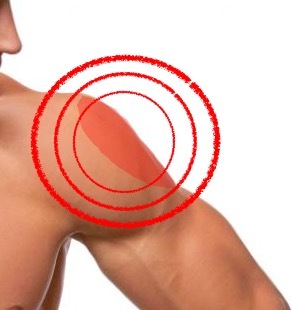New Developments in the Treatment of Rotator Cuff Disease
Shoulder pain affects up to one quarter of the population in the UK. By far the most common cause of pain (70%) is as a result of problems with the rotator cuff.
What is the “Rotator Cuff”?
The rotator cuff refers to the deep muscles and their tendons found around the ball and socket joint of the shoulder. They merge to form a “cuff” of tissue around the joint and are involved in the stabilization and movement (including “rotation”) of the joint.
Over the top of the shoulder joint is a bone called the acromion. In between the shoulder joint and the acromion is a narrow gap called the subacromial space. This is where the rotator cuff tendons pass through. In this space is a fluid-filled sac called the subacromial bursa, which cushions the tendons allowing them to glide under the acromion as the shoulder is moved.

What can go wrong with the rotator cuff?
Rotator cuff problems can include inflammation (swelling and soreness) of the tendons and bursa and also damage or tearing of the tendons.
What are the symptoms?
Pain arising from rotator cuff problems is usually felt in the upper outer part of the arm, particularly when lifting the arm up from the side and when lying on the arm at night. The arm is often reasonably comfortable when at rest by the side.

The usual site of pain with rotator cuff problems
What are the treatments?
Inflamed tendons
There are many names for this type of problem e.g. tendinits, tendinopathy, subacromial bursitis, impingement etc, but they all amount to the same thing i.e. a painful inflamed rotator cuff.
Common treatments include avoiding provocative activities, taking anti-inflammatory tablets, physical therapy, steroid injections and sometimes surgery.
Surgery involves an arthroscopic (keyhole) procedure to remove any inflamed bursal tissue and to remove any spurs of bone from the undersurface of the acromion to take the pressure off the tendons and stop them rubbing. This is known as an arthroscopic subacromial decompression.
Tendon tears
Broadly speaking, rotator cuff tears may occur in one of two ways:
A chronic or atraumatic tear occurs slowly over time. It will often follow a period of chronic tendinitis or impingement. At some point the tendon wears down and tears. Chronic tears do not always need repairing and if there are no symptoms associated with them, they can be considered as part of the normal aging process and be left alone.
An acute or traumatic tear occurs as a sudden event, often after a fall or after wrenching the shoulder. This will often result in difficulty lifting the arm up from the side. In this situation a repair, if possible, is usually recommended.
Rotator cuff tendon repairs
Modern techniques involve a keyhole approach which has certain advantages over open surgery. The aim is to reattach the torn tendon to the area of upper arm bone from which it has pulled off.
What if the tendon cant be repaired ?
Unfortunately, this is sometimes the case, for example when the tear is very large with poor tendon and muscle quality. Failure to repair the tendon can often leave the patient with pain and poor function. Fortuitously, there are some recent developments which can, in many instances, address some of the problems of irreparable rotator cuff tears.
What are the new developments?
There has been recent interest in a technique for surgery on some tears that were previously considered too large to repair. This involves partially repairing the tear and filling in the defect with a graft. Many types of graft have been used in the past with disappointing results. However, more recently a group of UK surgeons published encouraging results using a material called a Graft JacketTM. This technique is now used by a number of other surgeons in the UK
Similar materials have also more recently been used in a slightly different operation for irreparable cuff tears known as a superior capsular reconstruction, where the graft is stitched to the socket as well as the torn tendon edges.

Graft JacketTM used for grafting defects in rotator cuff
A recent development, now available in the UK is the InSpaceTM balloon. . It is inserted into the subacromial space between the acromion and upper arm bone (humerus) using a keyhole technique. It is then inflated with sterile salt water. It then forms a cushion between the two bones. This facilitates the rehabilitation of the shoulder in cases of irreparable rotator cuff tears. The aim is that over time time after the shoulder movement is restored and pain reduced. After the balloon has done its job, the body breaks it down so it has gone after six to twelve months.

InSpace BalloonTM for irreparable tendon tears
Is there an alternative to surgery ?
There are instances when a patient either does not want to, or is not suitable to undergo surgery. We are currently undertaking a study in Bath using nerve blocks to try to reduce pain around the shoulder in these cases. The supra-scapular nerve carries the majority of pain sensations from the shoulder and stopping this from working therefore can relieve shoulder pain. A temporary trial block is performed and if successful, a more long term version is then performed. Both procedures are performed under local anaesthetic and can be done as an out-patient.

Supra-scapular nerve block using ultrasound guidance
Summary
Rotator cuff problems can be very troublesome and often disabling. Fortunately, progress in the treatments available continues.